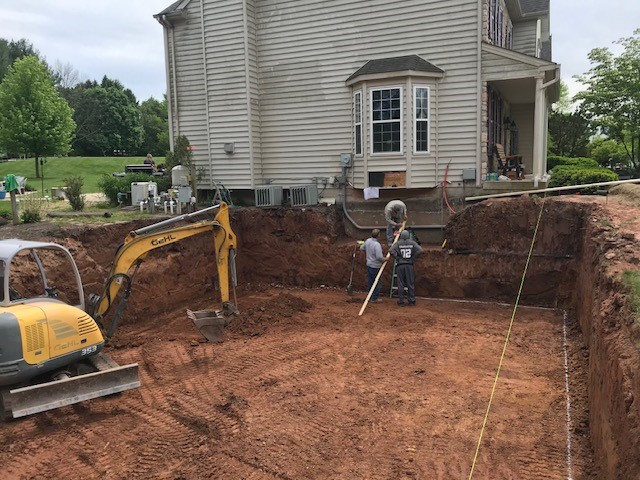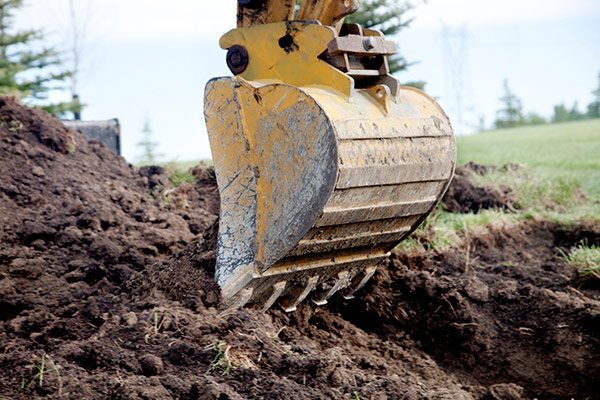Comprehensive Excavation Techniques: Understanding the Basics for Success
In the world of building and civil design, the importance of reliable excavation strategies can not be overstated. The mindful preparation, accurate implementation, and precise attention to information called for in excavation projects demand a comprehensive method that encompasses various essential aspects. From first dirt analysis to the application of precaution and regular progression surveillance, understanding these core components is crucial for attaining success in any type of excavation endeavor. The real proficiency lies not simply in comprehending these basics however in perfectly incorporating them to browse the complexities of excavation projects with finesse.
Comprehending Excavation Job Planning

Effective excavation projects are constructed on the foundation of detailed and meticulous preparation. The initial stage of any type of excavation job is the planning phase, where vital choices are made that can dramatically affect the end result of the task. Throughout this phase, it is necessary to collect all appropriate details concerning the website, consisting of topographical surveys, soil composition, and any kind of potential dangers that might exist. Understanding the job timeline, scope, and spending plan constraints is important for developing a thorough excavation plan that ensures the job's success.
One secret aspect of excavation project planning is the growth of an in-depth timeline that details the sequence of target dates, milestones, and activities. By carefully considering all these elements throughout the preparation phase, excavation tasks can be implemented successfully and properly, leading to effective results - lancaster excavation.
Dirt Evaluation and Site Assessment
Conducting detailed soil analysis and site examination is a critical action in the prep work stage of any kind of excavation task. Dirt analysis includes figuring out the structure, structure, and residential properties of the soil at the excavation site. This information is important for recognizing the dirt's bearing capacity, moisture web content, and capacity for erosion, which are crucial consider determining the excavation methods and equipment needed for the project.
Site assessment exceeds soil evaluation and includes a more comprehensive assessment of the overall website problems. This analysis includes identifying any potential risks, such as underground utilities, environmental issues, or unsteady terrain, that might influence the excavation procedure. By thoroughly assessing the site, project managers can develop effective excavation techniques that focus on safety and security, efficiency, and ecological protection.
Using sophisticated innovations like ground-penetrating radar, dirt sampling, and drone studies can boost the accuracy and performance of soil analysis and website evaluation. Spending time and sources in these initial steps can ultimately conserve time and stop costly hold-ups or complications during the excavation procedure.
Devices Choice and Application
Efficient excavation tasks depend heavily on strategic tools choice and application to ensure ideal performance and productivity. Picking the best tools for the task is essential in taking full advantage of efficiency and minimizing downtime. Elements such as the sort of soil, depth of excavation, and task range play a significant function in identifying one of the most appropriate tools for the her comment is here task available.

Along with picking the proper equipment, proper utilization is essential to job success. Operators needs to be trained to manage the devices securely and successfully - lancaster excavation. Regular maintenance checks and prompt repairs help avoid malfunctions and guarantee consistent performance throughout the task
Safety And Security Measures and Laws Compliance
In the realm of excavation projects, focusing on precaution and compliance with regulations is extremely important to making certain a lawfully sound and secure functional atmosphere. Security measures incorporate a series of practices, consisting of carrying out complete site assessments, applying appropriate signage and obstacles, and supplying sufficient safety and security training for all workers involved in the excavation procedure. Adherence to policies, such as OSHA needs useful reference in the United States, ensures that the excavation project fulfills the needed standards to shield employees, spectators, and the surrounding atmosphere.

Surveillance Progression and Adjusting Methods
Exactly how can forecast managers properly track the improvement of excavation jobs and adapt their strategies appropriately to maximize results? Surveillance progress is crucial for ensuring that excavation tasks stay on track and meet due dates. Project supervisors can use numerous devices and strategies to track progress, such as day-to-day development records, regular site inspections, and progressed monitoring modern technologies like drones and general practitioners tracking systems. By constantly checking the job's innovation, managers can identify any prospective delays or concerns early and take proactive procedures to resolve them.

Final Thought
Finally, mastering the principles of detailed excavation techniques read more is important for the success of any kind of job. By understanding job planning, assessing dirt and website problems, selecting ideal tools, abiding with safety policies, and checking progress, project managers can make certain a smooth and reliable excavation process. Executing these strategies will certainly result in effective results and reduce potential threats or obstacles throughout the excavation job.
The first phase of any kind of excavation job is the preparation phase, where important choices are made that can substantially impact the outcome of the job. Comprehending the task scope, timeline, and spending plan constraints is crucial for producing an extensive excavation strategy that guarantees the task's success.
How can predict supervisors properly track the development of excavation tasks and adjust their strategies accordingly to enhance end results? By very closely keeping an eye on progression and being willing to adjust strategies, task managers can boost the overall success of excavation jobs.
By understanding job preparation, examining dirt and site problems, picking ideal tools, abiding with safety and security regulations, and monitoring progress, project supervisors can make certain a smooth and efficient excavation process.